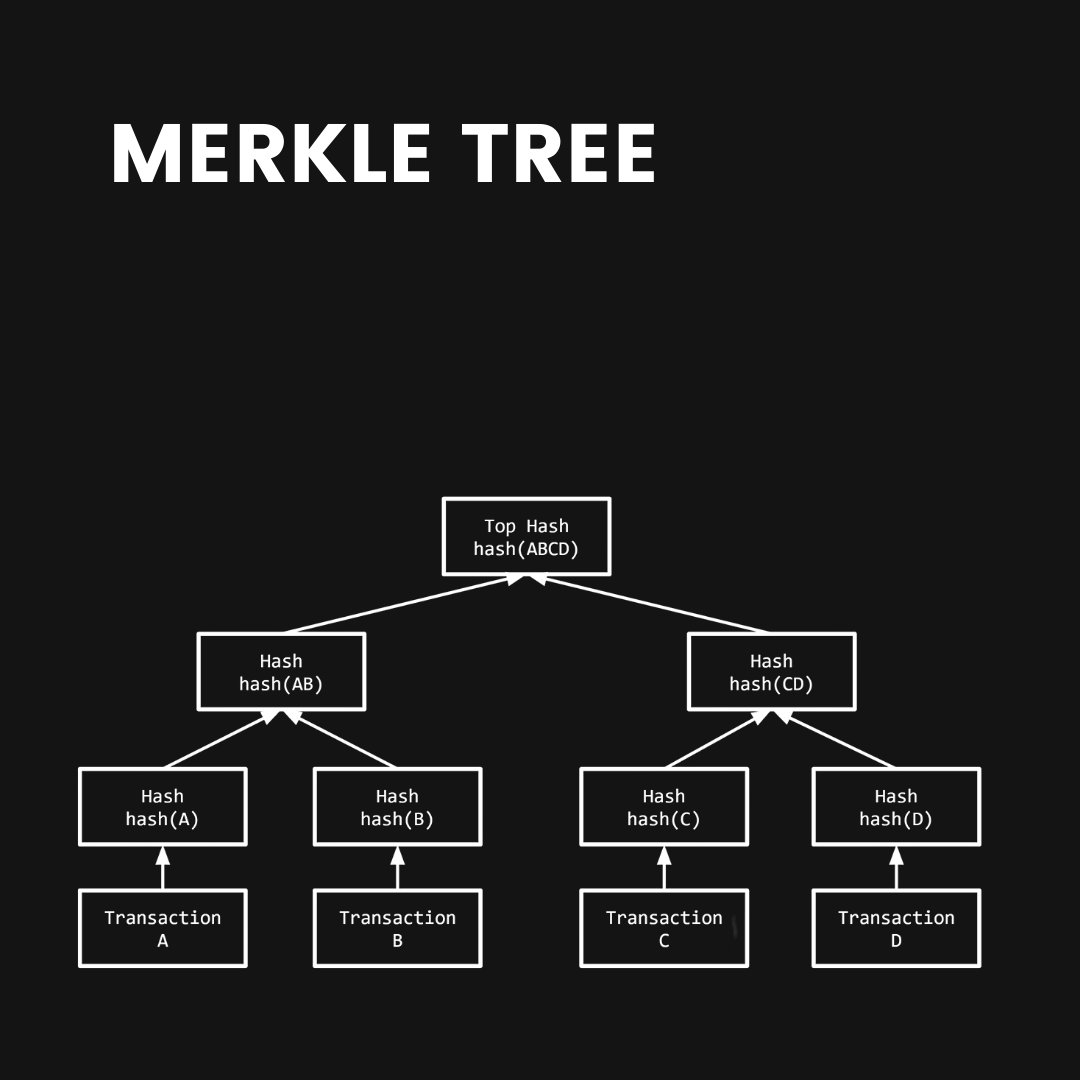Understanding Merkle Trees
Merkle trees are a data structure used in various fields, including blockchain technology. This blog explains how they work and provides an example of a Merkle tree.

Francesco
· Developer Advocate at @dailydotdev · Docker Captain · Public Speaker · Building a 1 Million Community 23% · All the links ➞ https://t.co/2DLpQ5cNoa

-
Merkle trees are a data structure used in various fields, including blockchain technology.
— Francesco (@FrancescoCiull4) April 8, 2023
They allow for efficient and secure data encoding, such as transactions in a blockchain.
A thread: pic.twitter.com/cLZr6WOJ8U -
In computer science, a TREE is a data structure representing a hierarchical structure consisting of interconnected nodes.
— Francesco (@FrancescoCiull4) April 8, 2023
Each node can have one or more children but only one parent, with the root being the exception as it has no parents.
Here's an example: pic.twitter.com/Gr1E4sdiVr -
In a Merkle tree, data is organized into a hierarchy of nodes, each representing the hash of its child nodes.
— Francesco (@FrancescoCiull4) April 8, 2023
This creates a tree-like structure where the root node represents the hash of all the data in the tree. pic.twitter.com/j9NScOeIlz -
The use of Merkle trees in blockchain technology provides several benefits,
— Francesco (@FrancescoCiull4) April 8, 2023
including:
- faster verification of transactions
- improved security
- efficient storage of large amounts of data. -
Some examples of uses for Merkle Trees include NoSQL systems, Bitcoin and Ethereum networks, and hash-based cryptography.
— Francesco (@FrancescoCiull4) April 8, 2023
Interesting fact:
Merkle trees are also used in version control systems, such as Git, where they are used to efficiently track changes in files and dirs -
For Blockchains:
— Francesco (@FrancescoCiull4) April 8, 2023
Valid transactions are grouped in batches and stored in blocks in a blockchain.
These transactions are hashed and encoded into a Merkle tree structure to ensure secure and efficient encoding of the blockchain data. -
Merkle trees are an effective cryptographic commitment scheme that works as follows:
— Francesco (@FrancescoCiull4) April 8, 2023
- The root of the tree represents a commitment.
- The leaf nodes can be revealed and verified to be included in the original commitment. -
From NoSQL systems to blockchain networks and beyond, Merkle trees have proven to be a versatile and secure way to encode data hierarchically.
— Francesco (@FrancescoCiull4) April 8, 2023
Whether you're into crypto or distributed systems, Merkle trees are worth exploring. -
That's it for our discussion on Merkle Trees.
— Francesco (@FrancescoCiull4) April 8, 2023
They're a powerful tool for efficient and secure data storage and verification, used in everything from cryptocurrency to file systems.
Hope you learned something new!
